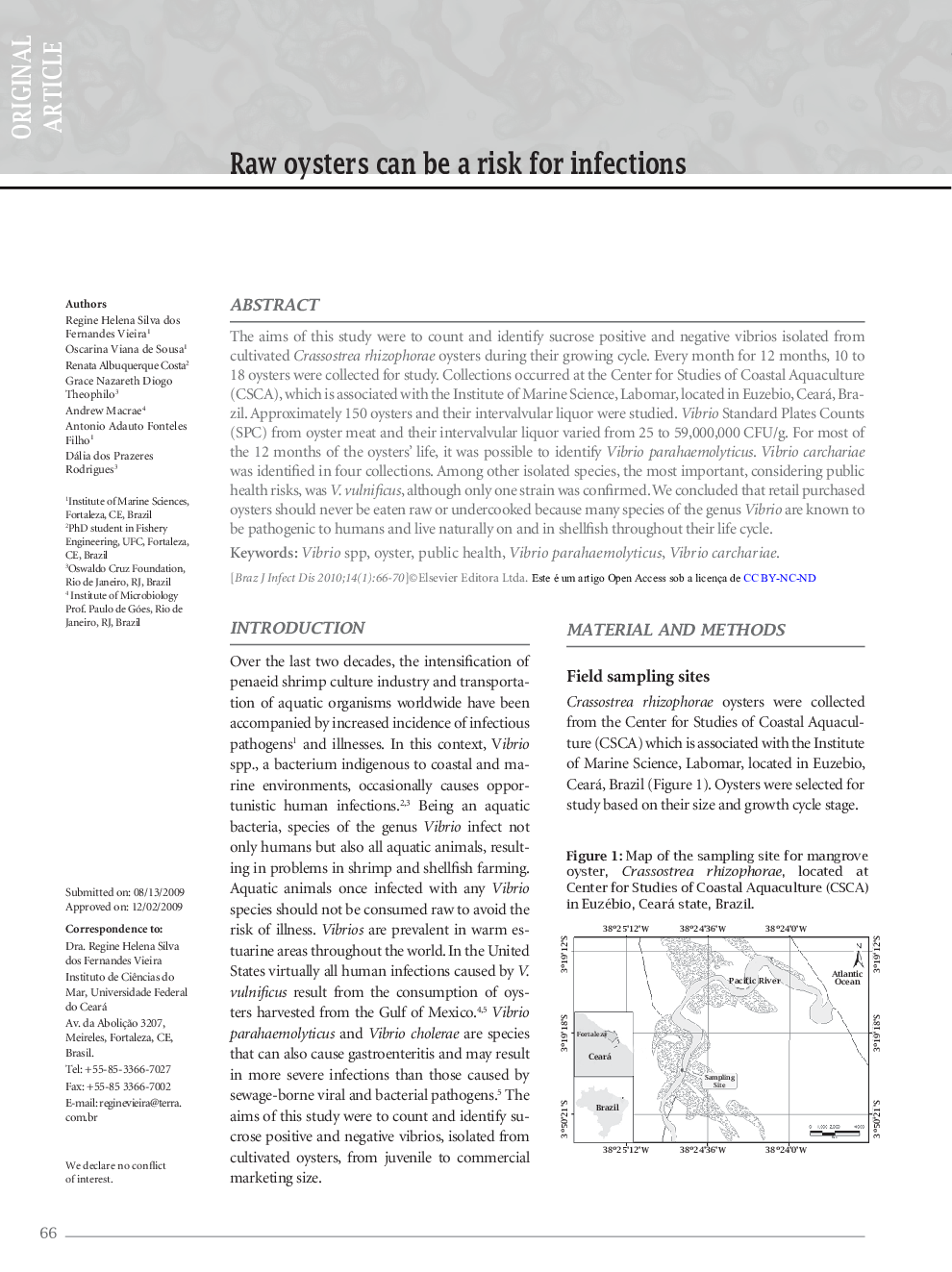| Article ID | Journal | Published Year | Pages | File Type |
|---|---|---|---|---|
| 3344569 | The Brazilian Journal of Infectious Diseases | 2010 | 5 Pages |
The aims of this study were to count and identify sucrose positive and negative vibrios isolated from cultivated Crassostrea rhizophorae oysters during their growing cycle. Every month for 12 months, 10 to 18 oysters were collected for study. Collections occurred at the Center for Studies of Coastal Aquaculture (CSCA), which is associated with the Institute of Marine Science, Labomar, located in Euzebio, Ceará, Brazil. Approximately 150 oysters and their intervalvular liquor were studied. Vibrio Standard Plates Counts (SPC) from oyster meat and their intervalvular liquor varied from 25 to 59,000,000 CFU/g. For most of the 12 months of the oysters’ life, it was possible to identify Vibrio parahaemolyticus. Vibrio carchariae was identified in four collections. Among other isolated species, the most important, considering public health risks, was V. vulnificus, although only one strain was confirmed. We concluded that retail purchased oysters should never be eaten raw or undercooked because many species of the genus Vibrio are known to be pathogenic to humans and live naturally on and in shellfish throughout their life cycle.
